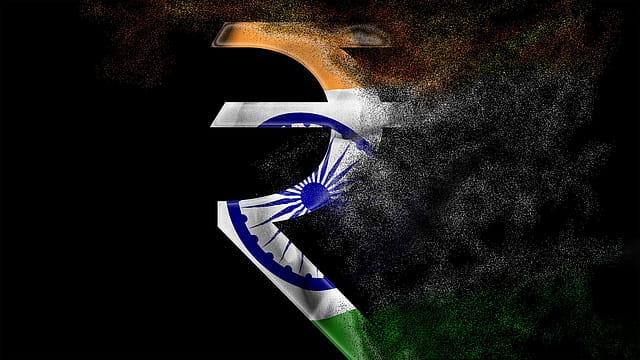India economy likely to cross $26-tn threshold by FY48: EY
ADVERTISEMENT

Despite the Covid pandemic and global economic crisis, India’s growth story remains intract and is likely cross the critical thresholds of $5, $10, and $26 trillion in FY28, FY36, and FY48, respectively, global consulting firm EY says in its latest report 'INDIA@100: Realising the potential of a $26 trillion economy' released at the sidelines of the 2023 World Economic Forum at Davos.
With the next 25 years deemed as the ‘Amrit Kaal’ by Prime Minister Narendra Modi, a period that is deemed as India’s opportunity to herald a new world era, the government has set for itself the goal of becoming a “developed” economy by 2047.
India will most likely overtake Germany and Japan and will become the third largest economy after China and the US by 2030, says the report. It shows that even while maintaining a stable yet modest growth rate averaging about 6% per annum, India would become a $26 trillion economy (in market exchange rate terms) by 2047-48 (in nominal terms), with a per capita income exceeding $15,000, nearly six times the current value.
Carine Di Sibio, EY global chairman and CEO, says India has shown immense potential and is positioned to make a truly transformative impact on the world stage. “With the biggest talent pool, an accelerated pace of economic reforms, breakthroughs in energy transition, and rapid digital transformation, the long-term growth trajectory is clearly positive."
January 2026
Netflix, which has been in India for a decade, has successfully struck a balance between high-class premium content and pricing that attracts a range of customers. Find out how the U.S. streaming giant evolved in India, plus an exclusive interview with CEO Ted Sarandos. Also read about the Best Investments for 2026, and how rising growth and easing inflation will come in handy for finance minister Nirmala Sitharaman as she prepares Budget 2026.
On key enablers that'll strengthen India’s position in the global economy over the next decade, the report highlights India's IT and service capabilities.
"India’s strong services exports have grown by 14% over the last two decades and stood at $254.5 bn in 2021-22. A large part of services exports is from the information technology (IT) services and business process outsourcing (BPO) services, with $157 bn in 2021-22," says the EY report.
Most Indian and global IT services players will have their centres of excellence for cloud, analytics and AI and other new-age technology in India, says the report, adding that great strides are being made in IP-based platform and product businesses.
Similarly, in non-IT services segments like education and healthcare, India has a unique opportunity to fill in the talent gap as developed economies face a shortage of skilled talent due to demographic changes.
India's digitisation campaign is also termed a force multiplier in India's economic journey. A large telecom subscriber base of 1.2 bn and 837 mn internet users combined with the government’s focus on building digital platforms have laid foundations for a digital economy, says the report. Over the period 2014-19, in absolute US dollar terms, the digital economy grew by 15.6%, which was 2.4 times faster than the growth of the Indian economy, it said.
The report also talks about India Stack pioneered by India, which has become a global benchmark for most countries and provides a competitive advantage for growing businesses. "Riding on the Stack and the wide-scale adoption of Unified Payments Interface (UPI) by 260 m unique users, India today accounts for the highest volume of real-time digital payments among businesses globally, with a share of over 40% of all such transactions."
According to the report, India currently depends on imports for meeting 35%-40% of its primary energy needs with crude oil being largest constituent. "Whenever price of crude oil increases, it is accompanied by depreciation of the Rupee, high inflation and slowing down of the economy. There is a need to continually reduce India’s dependence on imported energy."
Also, India’s combined government expenditure on education was at 3.1% of GDP and for health at 1.4% in 2021-22. These levels need to be increased further, it adds.
